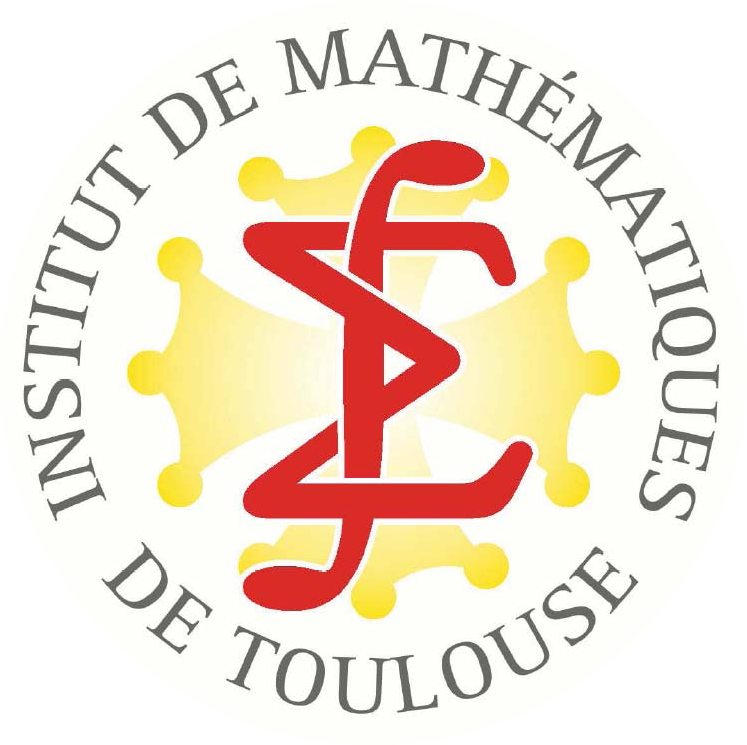@article{AFST_2002_6_11_4_485_0,
author = {Elena A. Erosheva and Stephen E. Fienberg and Brian W. Junker},
title = {Alternative statistical models and representations for large sparse multi-dimensional contingency tables},
journal = {Annales de la Facult\'e des sciences de Toulouse : Math\'ematiques},
pages = {485--505},
publisher = {Universit\'e Paul Sabatier. Facult\'e des sciences},
address = {Toulouse},
volume = {Ser. 6, 11},
number = {4},
year = {2002},
zbl = {02074278},
mrnumber = {2032354},
language = {en},
url = {https://afst.centre-mersenne.org/item/AFST_2002_6_11_4_485_0/}
}
TY - JOUR AU - Elena A. Erosheva AU - Stephen E. Fienberg AU - Brian W. Junker TI - Alternative statistical models and representations for large sparse multi-dimensional contingency tables JO - Annales de la Faculté des sciences de Toulouse : Mathématiques PY - 2002 SP - 485 EP - 505 VL - 11 IS - 4 PB - Université Paul Sabatier. Faculté des sciences PP - Toulouse UR - https://afst.centre-mersenne.org/item/AFST_2002_6_11_4_485_0/ LA - en ID - AFST_2002_6_11_4_485_0 ER -
%0 Journal Article %A Elena A. Erosheva %A Stephen E. Fienberg %A Brian W. Junker %T Alternative statistical models and representations for large sparse multi-dimensional contingency tables %J Annales de la Faculté des sciences de Toulouse : Mathématiques %D 2002 %P 485-505 %V 11 %N 4 %I Université Paul Sabatier. Faculté des sciences %C Toulouse %U https://afst.centre-mersenne.org/item/AFST_2002_6_11_4_485_0/ %G en %F AFST_2002_6_11_4_485_0
Elena A. Erosheva; Stephen E. Fienberg; Brian W. Junker. Alternative statistical models and representations for large sparse multi-dimensional contingency tables. Annales de la Faculté des sciences de Toulouse : Mathématiques, Série 6, Tome 11 (2002) no. 4, pp. 485-505. https://afst.centre-mersenne.org/item/AFST_2002_6_11_4_485_0/
[1] ). - Computing conditional maximum likelihood estimates for generalized Rasch models using simple loglinear models with diagonals parameters, Scandinavian Journal of Statistics, 20 (1993), 63-71. | MR | Zbl
[2] ). - Simple capture-recapture models permitting unequal catchability and variable sampling effort, Biometrics, 50 (1994), 494-500.
[3] ). - Links between binary and multi-category logit item response theory models and quasi-symmetric loglinear models, Annales de la Faculté des Sciences de l'Université de Toulouse Mathématiques, 11 (2002), This issue. | EuDML | Numdam | MR | Zbl
[4] ). - Discrete Statistical Models with Social Science Applications, North-Holland, Amsterdam, 1980. | MR | Zbl
[5] ), ). - The Life of Georg Rasch as a Mathematician and as a Statistician, in Anne Boomsma, Marijtje A. J. van Duijn and Tom A. B. Snijders, editors, Essays on Item Response Theory, volume 157 of Lecture Notes in Statistics, pages 3-24, Springer-Verlag, New York, 2001. | MR | Zbl
[6] ), ). - Statistical variations on an administrative records census, in Proceedings of the Section on Social Statistics, Alexandria, VA, 2001, American Statistical Association.
[7] ), ). - The analysis of capture-recapture data with a Rasch-type model allowing for conditional dependence and multidimensionality, Biometrics, 57, (2001), 714-719. | MR | Zbl
[8] ), ). - Marginal symmetry and quasi symmetry of general order, Journal of Multivariate Analysis, 34 (1990), 173-184. | MR | Zbl
[9] ), ), ) and ). - Latent class models for varying catchability and correlation among sources in capture-recapture estimation of the size of a human population, Statistica Applicata, 11 (1999), 563-576.
[10] ), ) and ). - Discrete Multivariate Analysis: Theory and Practice, MIT Press, Cambridge, MA, 1975. | MR | Zbl
[11] ), ). - Marginal maximum likelihood estimation of item parameters: Application of an EM algorithm, Psychometrika, 46 (1981), 443-459. | MR
[12] ), ). - Rank analysis of incomplete block designs I. The method of paired comparisons, Biometrika (1952), 324-345. | MR | Zbl
[13] ), ), ) and ), editors. - The National Halothane Study, Superintendent of Documents, U.S. Government Printing Office, Washington, D.C., 1969. Report of the Subcommittee of the National Halothane Study, of the Committtee on Anesthesia, Division of Medical sciences, National Academy of Sciences-National Research Council.
[14] ), ). - Rasch models, in Encyclopedia of Biostatistics, volume 5, 3724-3730, Wiley, New York, 1998.
[15] ). - Contribution à l'analyse statistique des tableaux de corrélation, Annales de la Faculté des Sciences de l'Université de Toulouse, 29 (année 1965), (1966), 77-183. | Numdam | MR | Zbl
[16] ), ). - Latent structure analysis of a set of multidimensional contingency tables, Journal of the American Statistical Association, 79 (1984), 762-771. | MR | Zbl
[17] ), ). - Simultaneous latent structure analysis in several groups, Sociological Methodology (1985), 81-110. | MR
[18] ). - Log-linear models for capture-recapture, Biometrics, 45 (1989), 395-413. | Zbl
[19] ), ). - The Use of mixed logit models to reflect heterogeneity in capture-recapture studies, Biometrics, 55 (1999), 294-301. | Zbl
[20] ), ). - On some models for multivariate binary variables parallel in complexity with the multivariate gaussian distribution, Biometrika, 89 (2002), 462-469. | MR | Zbl
[21] ), ). - Characterizing the manifest probabilities of latent trait models, Psychometrika, 48 (1983), 129-141. | MR | Zbl
[22] ). - Quasi-symmetry, in Samuel Kotz, Norman L. Johnson and Campbell B. Read, editors, Encyclopedia of Statistical Sciences, volume 7, 469-473, Wiley, New York, 1986. | MR
[23] ), ), ) and ). - A three-sample multiple-recapture approach to census population estimation with heterogeneous catchability, Journal of the American Statistical Association, 88 (1993), 1137-1148.
[24] ), ). - Separating two sources of dependence in repeated influenza outbreaks, Biometrika, 77 (1990), 237-243. | Zbl
[25] ), ). - Additive and multiplicative models and interactions, Annals of Statistics, 11 (1983), 724-738. | MR | Zbl
[26] ). - Rasch Measurement: Further examples and discussion, in Charles F. Turner and Elizabeth Martin, editors, Surveying Subjective Phenomena, volume 2, chapter 12, 367-403, Russell Sage Foundation, New York, 1984.
[27] ). - Population Heterogeneity Representations of Log-Linear, Latent Class, Rasch, and Grade of Membership Models, Technical Report 731, Department of Statistics, Carnegie Mellon University, 2001.
[28] ). - Grade of Membership and latent structure models with application to disability survey data, PhD thesis, Carnegie Mellon University, Department of Statistics, 2002.
[29] ). - Contingency tables and log-linear models: basic results and new developments, Journal of the American Statistical Association, 95 (2000), 643-647.
[30] ), ), ). - Classical multilevel and bayesian approaches to population size estimation using multiple lists, Journal of the Royal Statistical Society, Series A, 162 (1999), 383-405.
[31] ), ). - Loglinear models and categorical data analysis with psychometric and econometric applications, Journal of Econometrics, 22 (1983), 191-214. | MR | Zbl
[32] ), ), editors. - Rasch Models: Foundations, Recent Developments, and Applications, Springer-Verlag, New York, 1995. | Zbl
[33] ). - Exploratory latent structure analysis using both identifiable and unidentifiable models, Biometrika, 61 (1974), 215-231. | MR | Zbl
[34] ). - Total-score models and Rasch-type models for the analysis of a multidimensional contingency table, or a set of multidimensional contingency tables, with specified and/or unspecified order for response categories, Sociological Methodology, 20 (1990), 249-294.
[35] ). - Contributions to the statistical analysis of contingency tables : Notes on quasi-symmetry, quasi-independence, log-linear models, log-bilinear models, and correspondence analysis models, Annales de la Faculté des Sciences de l'Université de Toulouse, Mathématiques, 2002, This issue. | Numdam | MR | Zbl
[36] ). - The Analysis of Frequency Data, University of Chicago Press, Chicago, IL, 1974. | MR | Zbl
[37] ). - Maximum likelihood estimates in exponential response models, Annals of Statistics, 5 (1977), 815-841. | MR | Zbl
[38] ). - Review of "Statistical Applications Using Fuzzy Sets," by Kenneth G. Manton, Max A. Woodbury, and H. Dennis Tolley, Journal of the American Statistical Association, 90 (1995), 1131-1133.
[39] ). - The Dutch identity-A new tool for the study of item response models, Psychometrika, 55 (1990), 5-18. | MR | Zbl
[40] ), ). - Conditional association and unidimensionality in monotone latent variable models, Annals of Statistics, 14 (1986), 1523-1543. | MR | Zbl
[41] ), ), ), ) and ). - Working memory failure in phone-based interaction, ACM Transactions on Computer-Human Interaction, 4 (1997), 67-102.
[42] ). - Conjunctive item response theory kernels, Psychometrika, 51 (1986), 357-373. | Zbl
[43] ), ) and ). - Easy Bayes estimation for Rasch-type models, Psychometrika, 55 (1990), 449-460.
[44] ), ). - A characterization of monotone unidimensional latent variable models, Annals of Statistics, 25 (1997), 1327-1343. | MR | Zbl
[45] ), ), ). - Yule's association paradox and ignored stratum heterogeneity in capture-recapture studies, Journal of the American Statistical Association, 94 (1999), 855-859. | MR | Zbl
[46] ). - Loglinear Rasch model tests, Psychometrika, 49 (1984), 223-245. | Zbl
[47] ), ), ). - Semiparametric estimation in the Rasch model and related exponential response models, including a simple latent class model for item analysis, Journal of the American Statistical Association, 86 (1991), 96-107. | MR | Zbl
[48] ). - The technique of homogeneous tests compared with some aspects of "scale analysis" and factor analysis, Psychological Bulletin, 45 (1948), 507-530.
[49] ). - A Theory of Test Scores, Psychometric Monographs, 7 (1952).
[50] ), ), ). - Statistical Applications Using Fuzzy Sets, Wiley, New York, 1994. | MR | Zbl
[51] ). - A Rasch model for partial credit scoring, Psychometrika, 47 (1982), 149-174. | Zbl
[52] ). - Transforming contingency tables, Annals of Statistics, 10 (1982), 1172-1181. | MR | Zbl
[53] ), ). - Generalized linear models, Journal of the Royal Statistical Society, Series A, 135 (1972), 370-384. | MR
[54] ). - A geometrical approach to item response theory, Behaviormetrika, 23 (1996), 3-17.
[55] ). - Probabilistic Models for Some Intelligence and Attainment Tests, Niesen and Lydiche, Copenhagen, expanded English edition (1980), University of Chicago Press edition, 1960.
[56] ). - The Growing Family of Rasch models, in Anne Boomsma, Marijtje A. J. van Duijn and Tom A. B. Snijders , editors, Essays on Item Response Theory, volume 157 of Lecture Notes in Statistics, pages 25-42, Springer-Verlag, New York, 2001. | MR | Zbl
[57] ), ), ). - Exchange, structure, and symmetry in occupational-mobility, American Journal of Sociology, 91 (1985), 359-372.
[58] ), ). - Multivariate Contingency Tables and the Analysis of Exchangeability, Biometrics, 51 (1995), 1001-1016. | Zbl
[59] ), ). - Loglinear item response models, with applications to data from social surveys, Sociological Methodology, 19 (1989), 299-330.
[60] ). - A connection between Rasch's item analysis model and a multiplicative Poisson model, scandinavian journal of statistics, 9 (1982), 23-30. | MR | Zbl
[61] ), ), ). - Constrained latent budget analysis, Sociological Methodology, 22 (1992), 279-320.
[62] ), ). - Handbook of Modern Item Response Theory, Springer-Verlag, New York, 1997. | MR | Zbl




